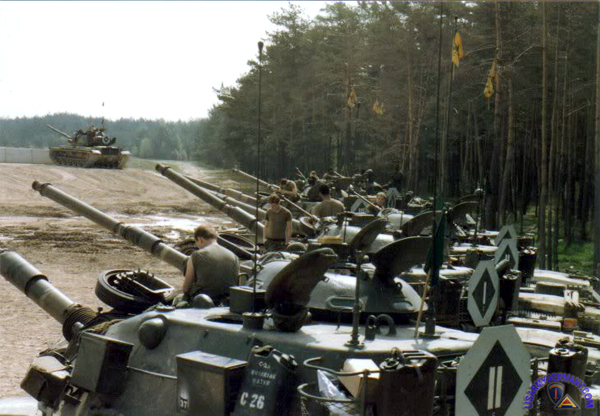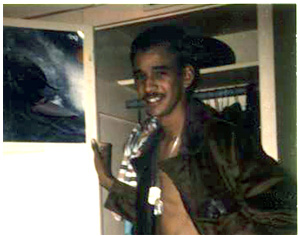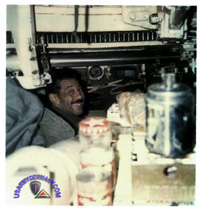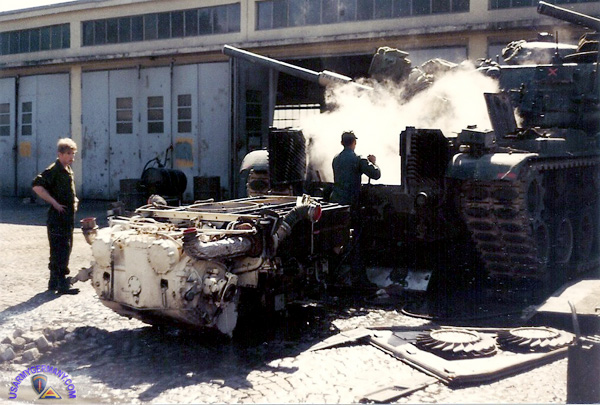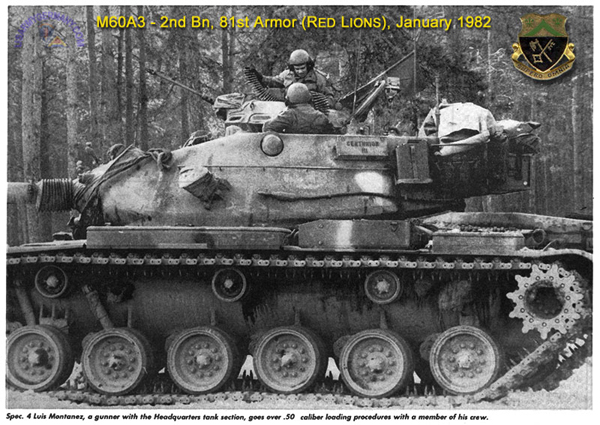| If you do NOT see the Table of Contents frame to the left of this page, then Click here to open 'USArmyGermany' frameset |
||||||||||||||||||||||||||||||
|
1st
Armored Division |
||||||||||||||||||||||||||||||
|
|
||||||||||||||||||||||||||||||
|
||||||||||||||||||||||||||||||
|
|
||||||||||||||||||||||||||||||
| 1st Brigade | ||||||||||||||||||||||||||||||
| 1980 | ||||||||||||||||||||||||||||||
| (Source: USAREUR Telephone Directory - Troop Units, Spring 1980) | ||||||||||||||||||||||||||||||
| ORGANIZATION (Spring 1980): | ||||||||||||||||||||||||||||||
|
||||||||||||||||||||||||||||||
| 2nd Brigade | ||||||||||||||||||||||||||||||
| 1980 | ||||||||||||||||||||||||||||||
| (Source: USAREUR Telephone Directory - Troop Units, Spring 1980) | ||||||||||||||||||||||||||||||
| ORGANIZATION (Spring 1980): | ||||||||||||||||||||||||||||||
|
||||||||||||||||||||||||||||||
| 3rd Brigade | ||||||||||||||||||||||||||||||
| 1973 | ||||||||||||||||||||||||||||||
| (Source: Email from Michael T. Toler) | ||||||||||||||||||||||||||||||
| I found your site while looking for answers to a research question.
I was assigned to units of the 3rd Brigade of the 1st Armored Division in Warner Barracks, Bamberg FRG from February 1973 to May 1977, serving in two companies of 1/54th IN (Mech), HHC 3rd Bde (twice), and two companies of 1/52nd IN (Mech) in 13 different duty positions. As a 2LT and 1LT, I commanded or was the acting commander of C/1/54, HHC 3rd Bde, and Combat Support Company/1/52; was an Asst Bde S4 and Bamberg Community Property Book Officer; and as a Captain was the Brigade S-3 Air, PALNRAS Custodian, War Plans Officer, and Training Officer. In July 1973, as a Nuke Surety PRP member and Company XO, I helped supervise the out-loading of tactical Nukes on CH 47s to Pirmasens and Miesau. In September 1973, I led the first infantry company C/1/54 IN guard mission of the consolidated tactical nukes stored at Pirmasens and Miesau, Germany for a month. In October or November 1973, I again deployed the company by rail through East Germany to Berlin, where we underwent Combat in Cities training at Park Range as hosted by the Berlin Brigade - for approximately 3 weeks, during which we toured West and East Berlin as a unit. The state of readiness, morale, and discipline were terrible at the time of my assignment, with rampant drug and racial problems. Our Brigade Commanders were COL (later BG) Adams, COL Bobby J. Harris, COL Thomas F. Healy, and COL Charles Prather. LTC Robert Sage was my first 1/54th IN Commander, followed by MAJ John Saunders. I do not recall those two after him. In my last year (1976-1977) LTC Novak was the BN Cdr of 3rd/35th Armor, and MAJ (later GEN) Wesley Clark was the BN S3. LTCs Soland, and Gasulga were the BN Cdrs of 1/52nd IN. As the S3 Air, I also commanded the Avn Detachment - 4 OH-58B helicopters. Our brigade participated as either observer/evaluators or opposing units to REFORGER each year, Combined Exercise Grosse Roshade in 1975 with Bundeswehr Mech/Armor units, and conducted the first hands-on Skill Qualification Tests (SQT) and Task Force ARTEPs in the Army. We also were the Model NBC Battalion in the Army. I designed 19 training facilities for Reese Range in Bamberg, most of which were constructed after I DEROSd to CONUS. I also was the OIC of all 9 platoons of the Brigade Mortars each time they had a live fire at either Graf or Hohenfels - 81mm and 4.2in and was the Division Mortar Safety Officer/Evaluator for all 1st Armored Division mortars during the ARTEPS in the spring of 1977. Although it was a terrible time in our Army after Vietnam, it formed the basis for my leadership, training, logistics, financial, UCMJ, and safety management skills and expertise throughout my 27 plus years of active duty. If you have questions about those units or locations, either I can help answer them, or refer them to two of my good friends and mentors - CSM (Ret) Edmund Devereaux and COL (Ret) Jan Beer, both of whom had two or more tours of duty in Germany. As a LTC in 1992, I was assigned as the Chief of Defense Cooperation between the US and Germany in the US Embassy in Bonn, but was diverted before my arrive to form and command a joint contingency contracting command in Somalia to support Operation Restore Hope, so I never got to return to Germany while on active duty. |
||||||||||||||||||||||||||||||
| 1980 | ||||||||||||||||||||||||||||||
| (Source: USAREUR Telephone Directory - Troop Units, Spring 1980) | ||||||||||||||||||||||||||||||
| ORGANIZATION (Spring 1980): | ||||||||||||||||||||||||||||||
|
||||||||||||||||||||||||||||||
| Brigade Units | ||||||||||||||||||||||||||||||
| 3rd Bn, 35th Arm 1st Bn, 37th Arm 1st Bn, 51st Inf 2nd Bn, 81st Arm . . . . |
||||||||||||||||||||||||||||||
| 3rd Battalion, 35th Armor | ||||||||||||||||||||||||||||||
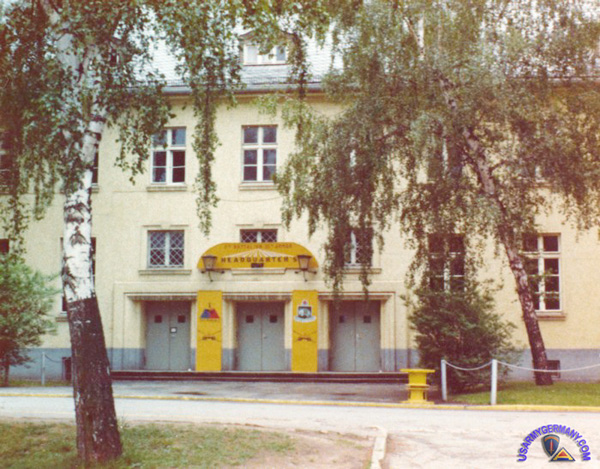 Headquarters building (#7007), Warner Bks, early 1970s (George Cabral) |
||||||||||||||||||||||||||||||
 M60A1 outside of Bldg #7019, Warner Bks, early 1970s (George Cabral) |
||||||||||||||||||||||||||||||
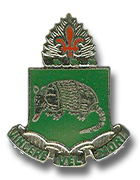 35th Armor DI 35th Armor DI 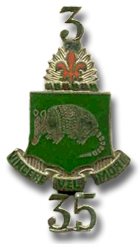 3rd Bn, 35th Armor DI 3rd Bn, 35th Armor DI |
||||||||||||||||||||||||||||||
| 1984 | ||||||||||||||||||||||||||||||
| (Source: Email from George K. Cabral, Co, 3-35th Arm, 1973) | ||||||||||||||||||||||||||||||
|
||||||||||||||||||||||||||||||
We were there (Katterbach) for about two days and one of the things I heard once they found out where I was assigned to was “I feel sorry for you buddy”. I gave it no thought since I did option for |
||||||||||||||||||||||||||||||
|
||||||||||||||||||||||||||||||
| "Q" Services | ||||||||||||||||||||||||||||||
|
||||||||||||||||||||||||||||||
| 1st Battalion, 37th Armor | ||||||||||||||||||||||||||||||
 1st Bn, 37th Arm DI 1st Bn, 37th Arm DI |
||||||||||||||||||||||||||||||
| 1976 | ||||||||||||||||||||||||||||||
| (Source: STARS & STRIPES, July 15, 1976) | ||||||||||||||||||||||||||||||
| 1st Bn, 37th Armor recently transitioned to the new 57-ton M60A2 tank. The battalion drew 54 of the missile-firing tanks at Vilseck between December 1975 and March 1976. B Company drew their tanks in February. In March the unit took their new tanks to the Hohenfels Training Area and put them trough their paces. One of the early problems encountered involves missile resupply. Missile resupply must be done from Army depots in the rear of battle areas. Officials are working on a refinement of this policy. Overall, units members feel that the M60A2 is an improvement over the older models of the M60 MBT. |
||||||||||||||||||||||||||||||
| 1981 | ||||||||||||||||||||||||||||||
| (Source: STARS & STRIPES, April 20, 1981) | ||||||||||||||||||||||||||||||
| 1st Bn, 37th Arm (the "Abrams" Battalion) originally received their M60A2 tanks in late 1975. Recently, the battalion completed its transition to the M60A3 main battle tank. The M60A2 was originally designed as an interim measure between the M60A1 and the more advanced M1 tank that is scheduled for Army-wide service. However, there have been problems with the complex M60A2 weapons system that have never been solved and the Army has decided to replace all of the M60A2's with the M60A3 for the interim period until the M1's are available. Tankers said that the High Explosive Anti-Tank (HEAT) system was too slow for use in intense tank-to-tank battles. Also, the 152-mm gun was effective only at ranges of 1,000 to 1,200 meters, considered too close against the superior number of tanks expected in any future European conflict. On the other hand, the tank could score first-round hits at 3,000 meters with almost every shot with its Shillelagh missile. Another problem was maintenance. Continuous maintenance had to be pulled by crews because of the many problems. Trouble-shooting for defective components was made difficult by the small crew space. Unit mechanics also had to scrounge for parts because regular supply channels have been out of parts for the M60A2 for more than a year. Mechanics had to revert to manufacturing parts they could not get through the supply system. |
||||||||||||||||||||||||||||||
| 1st Battalion, 51st Infantry | ||||||||||||||||||||||||||||||
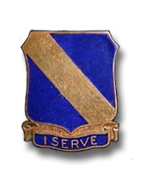 1st Bn, 51st Inf DI 1st Bn, 51st Inf DI |
||||||||||||||||||||||||||||||
| 1984 | ||||||||||||||||||||||||||||||
| (Source: IRONSIDES, January 13, 1984) | ||||||||||||||||||||||||||||||
| Unit boasts
colorful past
The 53rd Armored Infantry Battalion did it's share of the fighting as the 4th Armored Division advanced to the Rhein River and crossed it. The 4th AD was commended for it's immediate smash beyond the Main River, one hundred miles to the northeast into central Germany, which opened the way for sweeping advances. In April, the 4th plunged still deeper into Germany, rolling as much as 73 miles in a single day. On May 6, an 89 mile advance was made. Gen. Jacob L. Devers, commander of the 6th Army Corps, placed the blue streamer of the distinguished unit citation on the colors of the 53rd Armored Infantry Battalion. It also received streamers from Normandy, Northern France, Rhineland, Ardennes-Alsace, and Central Europe Campaigns. On May 1, 1946, Troop A of the 53rd Armored Infantry Battalion, served in the 6th Constabulary Squadron. On May 20 1948, the battalion was reassigned to the 4th Armored Division. The battalions of the regiment were then stationed at Fort Hood, Texas. Although none of the battalion's of the 51st regiment served in the Vietnam conflict, the D, E and F companies of the regiment served as separate companies in Vietnam. These companies served in Vietnam from 1966 until 1972 and received several unit commendations. The 1st Battalion, 51st Infantry was reassigned from the 4th Armored Division in 1957, to the 2nd Armored Division in Germany. In 1963 the unit was reassigned to the 4th Armored Division. On May 10, 1971, the 4th Armored Division was deactivated and the 1-51 was assigned to the 1st Armored Division. The battalion is presently commanded by Lt. Col. Roger Dimsdale, who took command in December, 1981. The battalion, which is currently located at Crailsheim, will be inactivated on June 16, 1984, when the 1st AD converts to the new Division 86 force structure. |
||||||||||||||||||||||||||||||
|
|
||||||||||||||||||||||||||||||
| (Source: IRONSIDES, January 13, 1984) | ||||||||||||||||||||||||||||||
| Battalion
marches into history The 1st Armored Division, along with all U.S. Army heavy divisions, will convert to the Division 86 force structure during Fiscal Year 1984. Under the Division 86 structure, each heavy division will decrease by one infantry battalion, while the remaining infantry battalions gain one additional rifle company. In the conversion to the new structure, the 1st AD will inactivate the 1st Battalion, 51st Infantry at McKee Barracks, Crailsheim on June 16, 1984. Three infantry battalions will obtain a company from the inactivated 1-51. The remaining battalion, 1-52 Infantry, will form it's additional company from incoming resources. Four unit moves will occur during the redistribution of 1-51 personnel and equipment. They will transfer in the J-Series MTOE configuration. On April 10, C Company, 1-51 will move from McKee Barracks, to Storck Barracks, Illesheim and will become D Co., 1-6 lnfantry. On April 24, A Co., 1-51 moves from McKee Barracks, to Warner Barracks, Bamberg and becomes D Co., 1-54 Infantry. B Co., 1-51 will move on May 1, from McKee Barracks to Ferris Barracks, Erlangen. It will become D Co., 2-6 Infantry. (In April, the 1-46 Infantry will become the 2-6 Infantry.) Once the infantry companies have moved, the Scout Platoon will move to Storck Barracks, Illesheim, and becomes the HHC 1st Brigade Scout Platoon. Under Division 86, each brigade will receive on additional scout platoon, and in this instance, the 1-51 platoon will go to the 1st Brigade. 1-51 Infantry will remain active as an organization until March 16. After that date, their primary mission will be preparation for inactivation, although some preparations have already begun. Once the companies and platoon have moved out, the remaining battalion personnel will take care of the final work before the inactivation. HHC and CSC assets and personnel will be reassigned as needed, once remaining equipment has been turned in or laterally transferred. By June 16, all personnel and equipment will be transfered to conform to the Division 86 configuration and the 1-51 Infantry will be inactivated. |
||||||||||||||||||||||||||||||
|
|
||||||||||||||||||||||||||||||
| 2nd Battalion, 81st Armor | ||||||||||||||||||||||||||||||
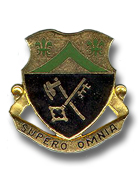 2nd Bn, 81st Armor DI 2nd Bn, 81st Armor DI |
||||||||||||||||||||||||||||||
| 1976 | ||||||||||||||||||||||||||||||
| (Source: STARS & STRIPES, July 25 1976) | ||||||||||||||||||||||||||||||
| 18 months ago (Jan 1975), 2nd Bn, 81st Arm out of Erlangen comprised 40 tank crews and 51 tanks. Today, there are 54 tank crews and 54 tanks, all of them the latest model M-60A1 (105mm main gun) with the add-on stabilized kit. Tank battalions with their infantry support are considered Seventh Army's big punch. Although Seventh Army tank units can expect to be outnumbered in a possible Warsaw Pact attack, Seventh Army units have trained to take advantage of the technological breakthrough of the lethality of its weapons. The M60A1 can hit and kill enemy armor at extended ranges - its best advantage is to fire at ranges between 1,000 to 2,000 meters. Tank crews train to get that advantage. In addition, Seventh Army tank crews are training to fight during periods of reduced visibility - at night. 50 percent of everything the tank unit does in training is at night. |
||||||||||||||||||||||||||||||
| Related Links: |
||||||||||||||||||||||||||||||



